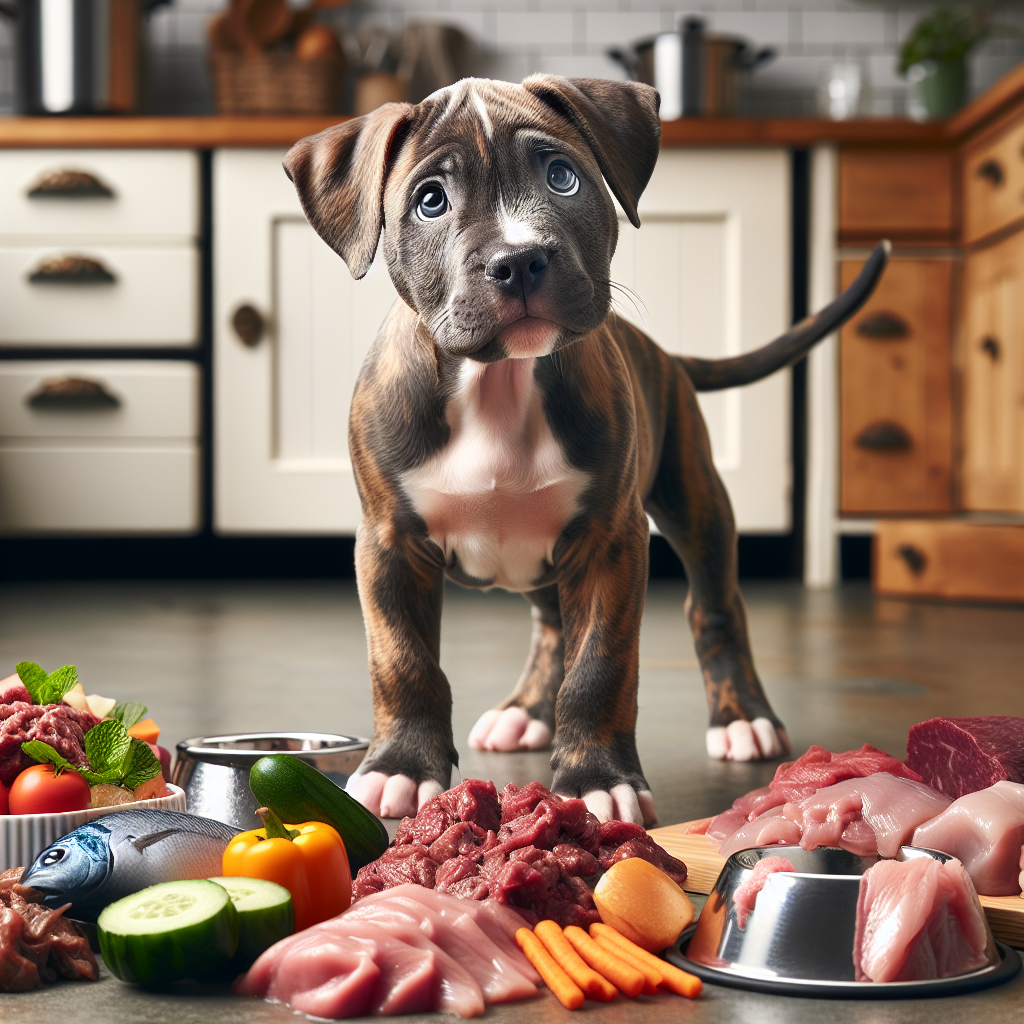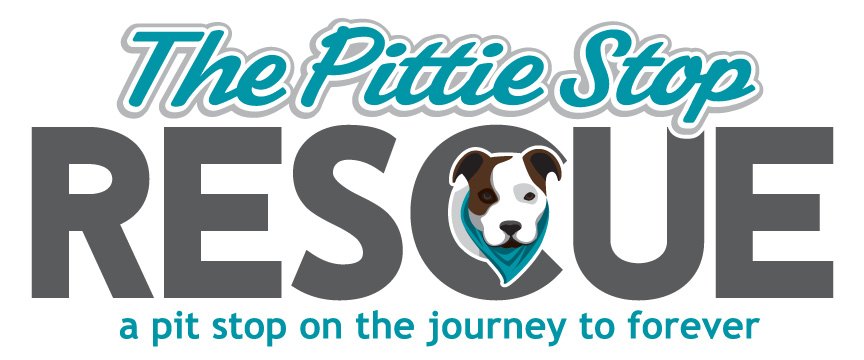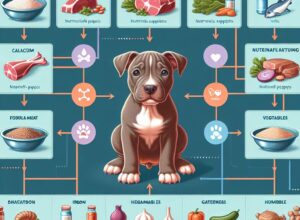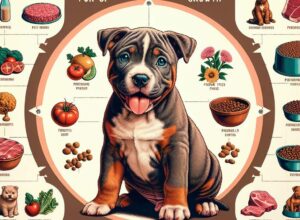
Key Takeaways
-
Choose high-quality meats from reputable sources to ensure safety in your pitbull puppy’s raw diet.
-
Practice thorough washing and cleaning of both food and preparation surfaces to minimize bacterial risks.
-
Understand and apply safe thawing and storage practices to keep the raw diet fresh and safe.
-
Maintain a clean feeding area and promptly address leftovers to prevent bacterial growth.
-
Regularly consult with a veterinarian to tailor the diet to your puppy’s specific needs and monitor their health.
Feeding Pitbull Puppies Safely: A Guide to Raw Diets
As a guardian to a growing pitbull puppy, you’re likely exploring the best diet options to ensure a healthy development. A raw diet can offer a range of benefits, from shinier coats to improved digestion, but it also comes with a responsibility to minimize bacterial risks. Let’s delve into how you can provide a nutritious raw diet while keeping your puppy safe from harmful bacteria.
Why Raw Diets Can Benefit Your Pitbull Puppy
Raw diets often mimic what canines would eat in the wild, which means they are rich in proteins and essential nutrients. For pitbull puppies, who are known for their muscular build and energy, a raw diet can support strong bones and a robust immune system. But remember, a raw diet isn’t just about tossing raw meat into a bowl; it requires careful planning and knowledge.
The Types of Bacteria That Pose a Threat
When we talk about bacteria in raw diets, we’re mainly concerned with pathogens like Salmonella, Listeria, and E. coli. These can cause serious health issues not just in your puppy, but also in humans who come into contact with contaminated food or surfaces. Therefore, it’s crucial to understand how to manage these risks.
Raw Diet Basics: Understanding Safe Food Sources
Not all meats are created equal, especially when it comes to raw feeding. It’s essential to source high-quality meats that are fresh and handled with care. This is where building a relationship with a trustworthy butcher or supplier comes into play. They should be knowledgeable about their products and able to provide meats that are safe for raw consumption.
Selecting High-Quality Meat
When choosing meat for your pitbull puppy’s raw diet, go for human-grade options whenever possible. This means the meat is suitable for human consumption and has passed certain safety standards. Look for cuts that are free from excessive processing, as these are less likely to harbor bacteria. Organic or grass-fed options can be beneficial, as they often contain fewer antibiotics and hormones.
Recognizing Reliable Suppliers
A reliable supplier is transparent about their sourcing and handling practices. They should be able to assure you that the meat has been stored at the correct temperatures and hasn’t been cross-contaminated with other food products. Don’t hesitate to ask questions; a good supplier will be happy to provide the information you need to make informed decisions.
Preparation Techniques to Reduce Bacteria
Once you have your high-quality meat, the next step is to prepare it in a way that minimizes bacterial risks. This starts with your own personal hygiene. Always wash your hands before and after handling raw meat. Use separate cutting boards and knives for meat and other foods, and clean them thoroughly after use.
Thorough Washing and Cleaning
Even if the meat looks clean, it’s wise to rinse it under cold water to remove any lingering bacteria on the surface. Clean all preparation surfaces with a disinfectant before and after you work with the meat. This includes countertops, cutting boards, and utensils. A clean prep environment is your first defense against bacteria.
Effective Thawing Practices
If you’re using frozen meat, never thaw it on the counter at room temperature. This can allow bacteria to multiply rapidly. Instead, thaw meat in the refrigerator or in cold water, changing the water every 30 minutes to ensure it remains cold. This method keeps the meat at a safe temperature throughout the thawing process.
Proper Cutting and Portioning Methods
When portioning meat for your puppy’s meals, cut it into pieces appropriate for their size. Smaller pieces are easier for them to chew and digest. If you’re preparing meals in advance, portion the meat into meal-sized servings before freezing. This way, you’ll only thaw what you need for each meal, reducing the risk of bacterial growth on leftovers.
Storage Solutions and Practices
Proper storage is just as important as the initial selection and preparation of your pitbull puppy’s raw diet. Safe storage helps to maintain the quality of the food and prevents the growth of potentially harmful bacteria. Let’s dive into the best practices for refrigerating, freezing, and handling your puppy’s raw meals.
Safe Refrigeration Tips
When storing raw meat in the refrigerator, keep it at 40°F (4°C) or below, which is the safe zone to slow bacterial growth. Use airtight containers to store the meat, and place them on the bottom shelf to avoid any drips onto other foods. Keep raw meat away from cooked foods or any foods that will be eaten raw, like fruits and vegetables.
It’s also important to keep an eye on expiration dates. Raw meat should not be kept in the fridge for more than a couple of days. If you’re not planning to use it within that time frame, it’s better to store it in the freezer.
Avoiding Cross-Contamination
Cross-contamination can occur when bacteria from raw meat transfer to other foods, surfaces, or objects. To prevent this, use separate containers for different types of meat and clearly label them. Always wash your hands, utensils, and surfaces after handling raw meat. And remember, never reuse marinades or sauces that have come into contact with raw meat unless they’re boiled first.
Appropriate Freezing Time Frames
Freezing is a great way to extend the shelf life of raw meat, but it’s not a forever solution. Generally, you can store raw meat in the freezer for 4-6 months. However, the sooner you use it, the better the quality will be. Label the containers with the date of freezing so you can keep track of how long the meat has been stored.
When freezing, spread out the portions in the freezer to allow cold air to circulate around them, which ensures even freezing. And when it’s time to use the frozen meat, always thaw it safely as previously mentioned.
Best Practices for Serving a Raw Diet
Serving your pitbull puppy a raw diet isn’t just about the food itself; it’s also about how you serve it. A clean and organized feeding area is essential to prevent bacterial contamination and to make mealtime a pleasant experience for your puppy.
Hygienic Feeding Area Set-Up
Choose a designated area for your puppy to eat that’s easy to clean. Non-porous surfaces like tile or linoleum are ideal. Use a washable mat under the feeding bowls to catch any spills, and make sure the bowls themselves are made from non-porous materials, such as stainless steel or ceramic, which are easier to disinfect than plastic.
Addressing Leftovers and Waste
-
If your puppy doesn’t finish their meal, discard the leftovers promptly. Bacteria can multiply quickly at room temperature.
-
Clean the feeding bowls with hot, soapy water after each meal, or run them through the dishwasher if they’re dishwasher-safe.
-
Dispose of any waste material, including bones or uneaten food, in a sealed container to prevent attracting pests or creating odors.
Being diligent about these practices will ensure that mealtime remains safe and enjoyable for both you and your pitbull puppy.
Recognizing and Managing Risk Factors
Even with all the right precautions, it’s important to stay vigilant for signs that your puppy may have ingested harmful bacteria. Knowing what to look out for and how to respond can make all the difference in keeping your puppy healthy.
Identifying Symptoms of Bacteria-Related Illnesses
Keep an eye out for symptoms such as vomiting, diarrhea, lethargy, or loss of appetite. These can be signs of bacterial infection from the raw diet. If you notice any of these symptoms, it’s important to act quickly and consult with your veterinarian.
When to Consult a Veterinarian
If your puppy shows any signs of illness, don’t hesitate to contact your vet. They can provide guidance on whether the symptoms are diet-related and what steps to take next. It’s always better to err on the side of caution when it comes to your puppy’s health.
Proactive Measures: Building a Healthy Puppy Diet
“Incorporating a raw diet for your pitbull puppy can lead to a vibrant, energetic pet, but it requires a careful balance. Always work with a veterinarian to ensure the diet meets all of your puppy’s nutritional needs and monitor their health closely.” – Dr. Jane Smith, DVM
Alongside feeding a raw diet, consider adding probiotics and supplements under the guidance of your vet. These can help maintain a healthy gut environment, making it less hospitable to harmful bacteria.
Regular health check-ups and diet reviews with your vet are also key. They can help adjust the diet as your puppy grows and changes, ensuring they always get the nutrients they need.
Answers to Common Concerns
FAQ: Can Frozen Raw Food Prevent Bacteria?
Freezing can slow down the growth of bacteria but doesn’t eliminate it. Always handle frozen raw food with the same care as fresh raw food.
FAQ: How Often Should I Clean My Puppy’s Feeding Bowls?
Clean your puppy’s feeding bowls after every meal to prevent bacterial growth and maintain a hygienic eating environment.
FAQ: Are Some Meats Safer Than Others for a Raw Diet?
All raw meats have the potential to carry bacteria. The key is to source high-quality meat and handle it correctly.
FAQ: How Can I Tell if the Raw Meat is Still Good?
Look for changes in color, smell, and texture. If the meat smells off or is slimy, it’s best to discard it.
FAQ: Should Puppies Have a Mixed Diet of Raw and Cooked Food?
This depends on your puppy’s specific needs and should be discussed with your vet. Some puppies may benefit from a mixed diet, while others may thrive on a fully raw diet.
When to Consult a Veterinarian
It’s crucial to know when to seek professional advice. If your pitbull puppy shows signs of distress, like persistent vomiting, diarrhea, or sudden lethargy, these could be red flags. Bacteria from raw food can cause serious health issues, and early intervention is key. Keep your vet’s number handy, and don’t hesitate to call if something seems off. Remember, you know your puppy best, and if you feel something is wrong, it’s worth getting it checked out.
Proactive Measures: Building a Healthy Puppy Diet
Feeding your pitbull puppy a raw diet isn’t just about managing risks; it’s also about building a strong foundation for their long-term health. This means being proactive in their dietary needs and adjusting as they grow. Regular check-ins with your vet can ensure your puppy is getting the right balance of nutrients to support their active lifestyle and robust growth.
Incorporating Probiotics and Supplements
Probiotics can be a game-changer in your puppy’s diet. They help maintain a healthy gut flora, which can be especially beneficial for puppies on a raw diet. Supplements, like omega-3 fatty acids, can support skin and coat health. But here’s the deal: always consult your vet before adding anything new to your puppy’s diet. They can recommend the right products and dosages for your pup’s specific needs.
Think of probiotics and supplements as the sidekicks to your puppy’s raw diet superhero. They work together to keep your pup feeling great. Just be sure to introduce any new supplements gradually and keep an eye out for any changes in your puppy’s digestion or behavior.
Regular Health Check-Ups and Diet Reviews
Regular vet visits are more than just a routine; they’re an opportunity to fine-tune your puppy’s diet. Your vet can track your pup’s growth, monitor their overall health, and make dietary recommendations based on their findings. These check-ups are also a chance to discuss any concerns you might have about your puppy’s eating habits or behavior.
Answers to Common Concerns
FAQ: Can Frozen Raw Food Prevent Bacteria?
Freezing can indeed slow down bacterial growth, but it doesn’t kill all bacteria. When you’re ready to serve frozen raw food, thaw it safely in the fridge or in cold water, and handle it with the same care as you would fresh raw meat. The goal is to keep bacteria at bay, not give it a chance to wake up from its chilly nap.
FAQ: How Often Should I Clean My Puppy’s Feeding Bowls?
Think of your puppy’s bowl like your own dinner plate. You wouldn’t use the same plate for a week straight, right? The same goes for your pup. Clean their bowls after every meal to prevent bacteria from setting up camp. Hot, soapy water does the trick, or you can pop the bowls in the dishwasher if they’re dishwasher-safe.
FAQ: Are Some Meats Safer Than Others for a Raw Diet?
All raw meats have the potential to harbor bacteria, but some are indeed riskier than others. Ground meats, for example, have more surface area for bacteria to grow. Larger cuts of meat might be a safer bet, but the key is proper handling and storage, no matter the type of meat. Always source your meats from reputable suppliers, and keep everything clean and cold.
FAQ: How Can I Tell if the Raw Meat is Still Good?
Trust your senses on this one. If the meat has an off odor, has changed color, or feels slimy, it’s time to say goodbye. It’s not worth the risk of feeding it to your puppy. When in doubt, throw it out. It’s better to be safe than sorry when it comes to your pup’s health.
FAQ: Should Puppies Have a Mixed Diet of Raw and Cooked Food?
This is a great question and one that doesn’t have a one-size-fits-all answer. Some puppies do well on a mixed diet, while others thrive on strictly raw or cooked foods. It really depends on your puppy’s individual health and nutritional needs. The best course of action is to work with your vet to determine the best diet plan for your pitbull puppy.



